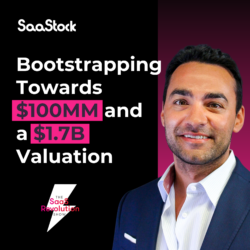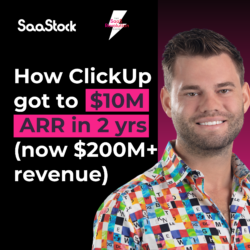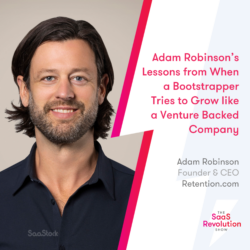Let’s have a real moment about SaaS email marketing. Not the kind where someone quotes a stat from 2014 about “email ROI” and then tries to sell you a course. I mean the kind where you sigh, look at your Mailchimp dashboard, and wonder if anyone actually reads those beautiful workflows you spent four hours on.
Here’s the truth: email marketing is both the most underused and abused channel in SaaS. Most companies have two speeds: total neglect (a.k.a. “we send a monthly update that even our own team ignores”) or email carpet-bombing (“let’s send 17 onboarding emails in 10 days and see what happens!”). And somewhere in the middle, magic actually happens.
Let’s break down what works, what doesn’t, and how to get your emails not just opened, but obsessed over. Along the way, you’ll find real-world, practical tips, and you’ll notice I’m not afraid to call out the boring stuff. (You’ll also see the required links, but if I do my job, you’ll barely notice.)
Step one: Understand your audience or keep guessing (your call)
You can’t send good emails if you don’t know who’s reading them. And no, “B2B decision makers” isn’t a persona—it’s a LinkedIn filter. SaaS users are a zoo: from night-owl devs to over-caffeinated salespeople, each with different pains and triggers. Ignore this, and you’ll be writing novels to people who only want headlines, or vice versa.
Great SaaS email marketing always starts with knowing your audience. Stalk their feedback on support tickets, eavesdrop on sales calls, and pay attention to the weird, slightly unhinged requests that come in at 2 a.m. from your biggest power user. If you’re not at least a little obsessed with your users, don’t bother with the next step.
And if you really want to go deep? Sit in on a few cold calling sessions with your sales team. You’ll pick up on patterns, pain points, and objections that will make your emails sing (and not in that awkward, karaoke-at-the-company-retreat way).
Step two: Sending more emails isn’t a crime (if you’re not a robot)
Let’s get this out of the way: you’re probably not sending enough email. (And if you are, but still getting bad results, keep reading.) Most SaaS marketers tiptoe around frequency like it’s a bomb. But the real problem isn’t sending more emails, it’s sending more irrelevant emails.
Want to send more? Here’s the deal:
-
Only show up with something worth saying.
-
Don’t repeat yourself just to fill a calendar.
-
Stop blasting the same thing to everyone.
Real talk: the SaaS brands you remember in your inbox are the ones that pop up with something timely, helpful, or (gasp!) actually fun to read. The rest become wallpaper.
So go ahead, schedule that extra check-in, share a win, or send a genuinely useful tip. Just remember, if you wouldn’t forward it to a friend, re-write it.
Step three: Transactional emails are your secret conversion channel
I’m convinced that 95% of SaaS companies set up their transactional emails once, then never touch them again. Big mistake. These are the emails with the best open rates you’ll ever see—password resets, payment receipts, notifications. And what do most companies do with this prime real estate? Squander it with dry, generic copy and a logo so blurry it looks like it was made in Paint – seriously, invest in a decent logo maker.
Imagine this instead: a password reset email that says, “You survived another login. Gold star for you! P.S. Did you know you can set up 2FA from your dashboard? We’re big on security, but not on stress.”
Or a payment confirmation that slips in, “While we have you, check out our new knowledge base. Customers say it saves them hours each month (and at least three emails to support).”
Treat every transactional touchpoint as a brand moment, not a boring necessity. Your churn rate will thank you.
Step four: Your onboarding flow is not Netflix—so stop with the saga
Most SaaS onboarding emails read like a five-part docuseries, but with less suspense and worse pacing. You sign up and get hit with a barrage of “Welcome!”, “Getting started!”, “Don’t forget to…” emails, none of which actually answer the real questions you have.
Let’s cut the nonsense. Good onboarding emails do a few things well:
-
Welcome users like a human, not like you’re reading a GDPR disclosure.
-
Offer one clear next step. (Seriously. Just one.)
-
Show actual value fast. People don’t want your origin story. They want to look smart at their next meeting.
The trick is to build onboarding flows based on actions, not dates. If a user gets stuck importing data, that’s when you help—not three days later, after you’ve sent “Step 4: Integrate with Slack.”
Want to see how the pros do it? Check out any SaaS that actually eats its own dog food when it comes to onboarding, or start experimenting with a smarter drip campaign strategy—one that responds to real user behavior, not just “Day X” on a calendar.
Step five: Not all features are email-worthy (but stories are)
Every product update doesn’t deserve an email. But, every user pain solved does. There’s a difference.
Nobody cares about “minor UI enhancements.” But if you made it possible to export invoices in one click instead of six, now you’re talking. Explain why it matters, show (don’t just tell) the difference, and maybe even toss in a mini-case study.
A good update email doesn’t just list features—it tells a story. “We heard from dozens of users that invoice export was a nightmare, so we built a shortcut. Try it out, and let us know what you think.”
See the difference? You’re not marketing at your users. You’re partnering with them.
Step six: The art (and science) of the SaaS “winback”
Churn happens. Every SaaS marketer eventually stares at a list of “inactive” or “canceled” users and wonders if it’s worth reaching out. The answer: yes, but only if you do it right.
Don’t send “We miss you!” emails like you’re a needy ex. Instead, make it about them:
-
Share what’s new since they left.
-
Offer something genuinely helpful—an extended trial, access to new features, a shortcut to migrate their data back.
-
Be honest: “We know you tried us before, and we’d love to hear what didn’t work. No pressure, but if you want to give us another go, here’s a free month on the house.”
People respond to honesty and relevance. Gimmicks, not so much.
Step seven: Stop blasting, start segmenting
Segmentation is not optional in SaaS. If you’re sending the same thing to admins, end users, free trialists, and paying customers, you’re wasting time (and annoying everyone).
Real segmentation means knowing who’s who, what they care about, and how they use your product. Are you talking to a sales leader? They want to know about new pipeline features. An engineer? Lead with security improvements and API management docs.
Even the best SaaS companies have to start somewhere, and sometimes it means going back to basics. Map your user journeys, tag behavior, and then, finally, you’ll be ready to compare ecommerce platforms in a way that feels relevant—because you actually know which users need it.
Step eight: Don’t forget the feedback loop
Here’s the part almost everyone skips: email is a conversation, not a monologue. Every campaign, every update, every onboarding sequence should have a feedback hook.
Invite users to reply. Ask what they wish you’d build next. Share a quick poll (“How likely are you to recommend us? Be honest—we can take it.”). Every reply, every complaint, every off-the-wall suggestion is gold for your next campaign.
The best SaaS marketers use their inbox like a product lab. Some of the best features and highest-converting emails I’ve ever shipped came straight from users who replied to an onboarding message.
Step nine: If you’re not testing, you’re guessing
SaaS email is the ultimate playground for testing. Try bold subject lines (“Delete this email if you hate saving time.”), weird send times (who says 2 p.m. on a Tuesday is king?), or super short/ultra long-form content.
And here’s where the magic happens: the more you test, the more you’ll realize what your users respond to. Some love a personal, story-driven approach. Others want the five-second, bulletproof tip. Let data guide you, but never let it take the place of creativity.
Step ten: Don’t automate the humanity out
Tools and automation are great, but don’t let them turn your emails into cold, lifeless reminders that you’re a software company. If all your comms sound like they were written by the same AI model that generated your last investor update, it’s time to rethink.
Keep the voice honest, a little playful, and sometimes even self-deprecating. Make mistakes, own them, and if you’re really brave, use email to say, “Hey, we screwed up, but we fixed it.”
That’s how you turn users into advocates.
TL;DR—But you should really read the whole thing
Email marketing for SaaS is not about volume or fancy workflows. It’s about connection, timing, and treating people like… people.
-
Obsess over your audience until you know them better than they know themselves.
-
Don’t be afraid of sending more emails—just make each one count.
-
Turn transactional emails into magic moments.
-
Let onboarding be guided by real user actions and a responsive drip campaign strategy.
-
Segment, test, and never lose your brand’s voice—even when you scale.
If you’re still stuck, remember: boring emails are the only emails that definitely won’t work. Dare to be interesting, and suddenly your SaaS will be the one people talk about—and not just in Slack DMs complaining about another onboarding fail.
Now get back to your editor, write something worth sending, and remember: your next great feature release, onboarding sequence, or even apology note could be the email that wins a customer for life. Just don’t make them regret opening it.




